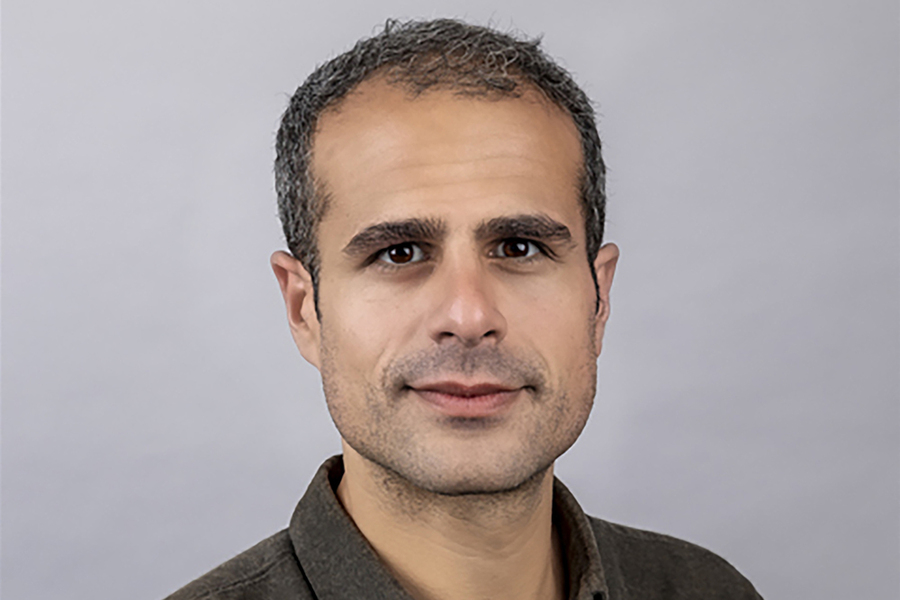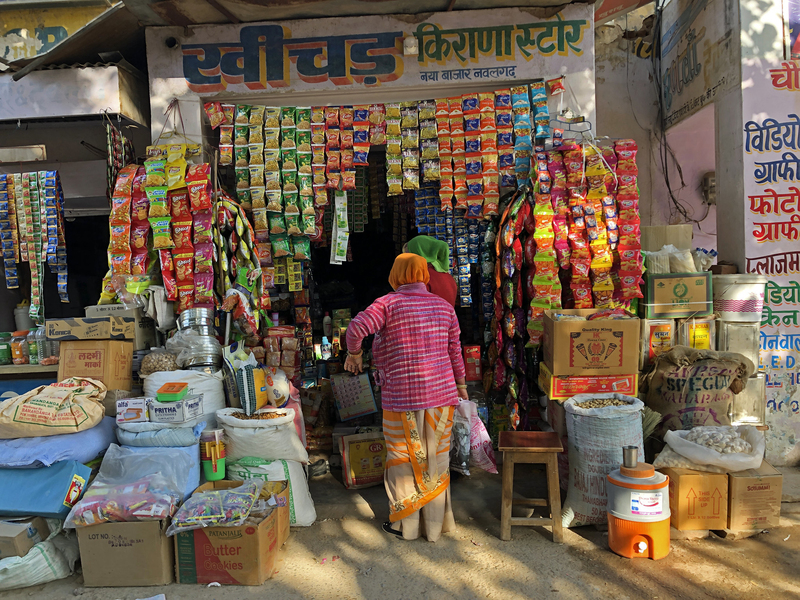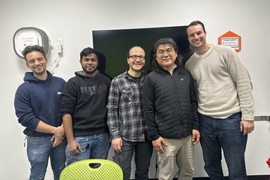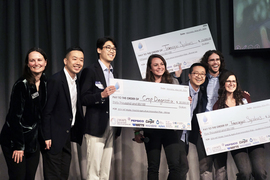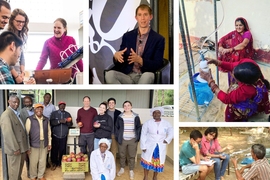Oct. 16 is World Food Day, a global campaign to celebrate the founding of the Food and Agriculture Organization 80 years ago, and to work toward a healthy, sustainable, food-secure future. More than 670 million people in the world are facing hunger. Millions of others are facing rising obesity rates and struggle to get healthy food for proper nutrition.
World Food Day calls on not only world governments, but business, academia, the media, and even the youth to take action to promote resilient food systems and combat hunger. This year, the Abdul Latif Jameel Water and Food Systems Laboratory (J-WAFS) is spotlighting an MIT researcher who is working toward this goal by studying food and water systems in the Global South.
J-WAFS seed grants provide funding to early-stage research projects that are unique to prior work. In an 11th round of seed grant funding in 2025, 10 MIT faculty members received support to carry out their cutting-edge water and food research. Ali Aouad PhD ’17, assistant professor of operations management at the MIT Sloan School of Management, was one of those grantees. “I had searched before joining MIT what kind of research centers and initiatives were available that tried to coalesce research on food systems,” Aouad says. “And so, I was very excited about J-WAFS.”
Aouad gathered more information about J-WAFS at the new faculty orientation session in August 2024, where he spoke to J-WAFS staff and learned about the program’s grant opportunities for water and food research. Later that fall semester, he attended a few J-WAFS seminars on agricultural economics and water resource management. That’s when Aouad knew that his project was perfectly aligned with the J-WAFS mission of securing humankind’s water and food.
Aouad’s seed project focuses on food subsidies. With a background in operations research and an interest in digital platforms, much of his work has centered on aligning supply-side operations with heterogeneous customer preferences. Past projects include ones on retail and matching systems. “I started thinking that these types of demand-driven approaches may be also very relevant to important social challenges, particularly as they relate to food security,” Aouad says. Before starting his PhD at MIT, Aouad worked on projects that looked at subsidies for smallholder farmers in low- and middle-income countries. “I think in the back of my mind, I've always been fascinated by trying to solve these issues,” he noted.
His seed grant project, Optimal subsidy design: Application to food assistance programs, aims to leverage data on preferences and purchasing habits from local grocery stores in India to inform food assistance policy and optimize the design of subsidies. Typical data collection systems, like point-of-sales, are not as readily available in India’s local groceries, making this type of data hard to come by for low-income individuals. “Mom-and-pop stores are extremely important last-mile operators when it comes to nutrition,” he explains.
For this project, the research team gave local grocers point-of-sale scanners to track purchasing habits. “We aim to develop an algorithm that converts these transactions into some sort of ‘revelation’ of the individuals’ latent preferences,” says Aouad. “As such, we can model and optimize the food assistance programs — how much variety and flexibility is offered, taking into account the expected demand uptake.” He continues, “now, of course, our ability to answer detailed design questions [across various products and prices] depends on the quality of our inference from the data, and so this is where we need more sophisticated and robust algorithms.”
Following the data collection and model development, the ultimate goal of this research is to inform policy surrounding food assistance programs through an “optimization approach.” Aouad describes the complexities of using optimization to guide policy. “Policies are often informed by domain expertise, legacy systems, or political deliberation. A lot of researchers build rigorous evidence to inform food policy, but it’s fair to say that the kind of approach that I’m proposing in this research is not something that is commonly used. I see an opportunity for bringing a new approach and methodological tradition to a problem that has been central for policy for many decades.”
The overall health of consumers is the reason food assistance programs exist, yet measuring long-term nutritional impacts and shifts in purchase behavior is difficult. In past research, Aouad notes that the short-term effects of food assistance interventions can be significant. However, these effects are often short-lived. “This is a fascinating question that I don’t think we will be able to address within the space of interventions that we will be considering. However, I think it is something I would like to capture in the research, and maybe develop hypotheses for future work around how we can shift nutrition-related behaviors in the long run.”
While his project develops a new methodology to calibrate food assistance programs, large-scale applications are not promised. “A lot of what drives subsidy mechanisms and food assistance programs is also, quite frankly, how easy it is and how cost-effective it is to implement these policies in the first place,” comments Aouad. Cost and infrastructure barriers are unavoidable to this kind of policy research, as well as sustaining these programs. Aouad’s effort will provide insights into customer preferences and subsidy optimization in a pilot setup, but replicating this approach on a real scale may be costly. Aouad hopes to be able to gather proxy information from customers that would both feed into the model and provide insight into a more cost-effective way to collect data for large-scale implementation.
There is still much work to be done to ensure food security for all, whether it’s advances in agriculture, food-assistance programs, or ways to boost adequate nutrition. As the 2026 seed grant deadline approaches, J-WAFS will continue its mission of supporting MIT faculty as they pursue innovative projects that have practical and real impacts on water and food system challenges.
